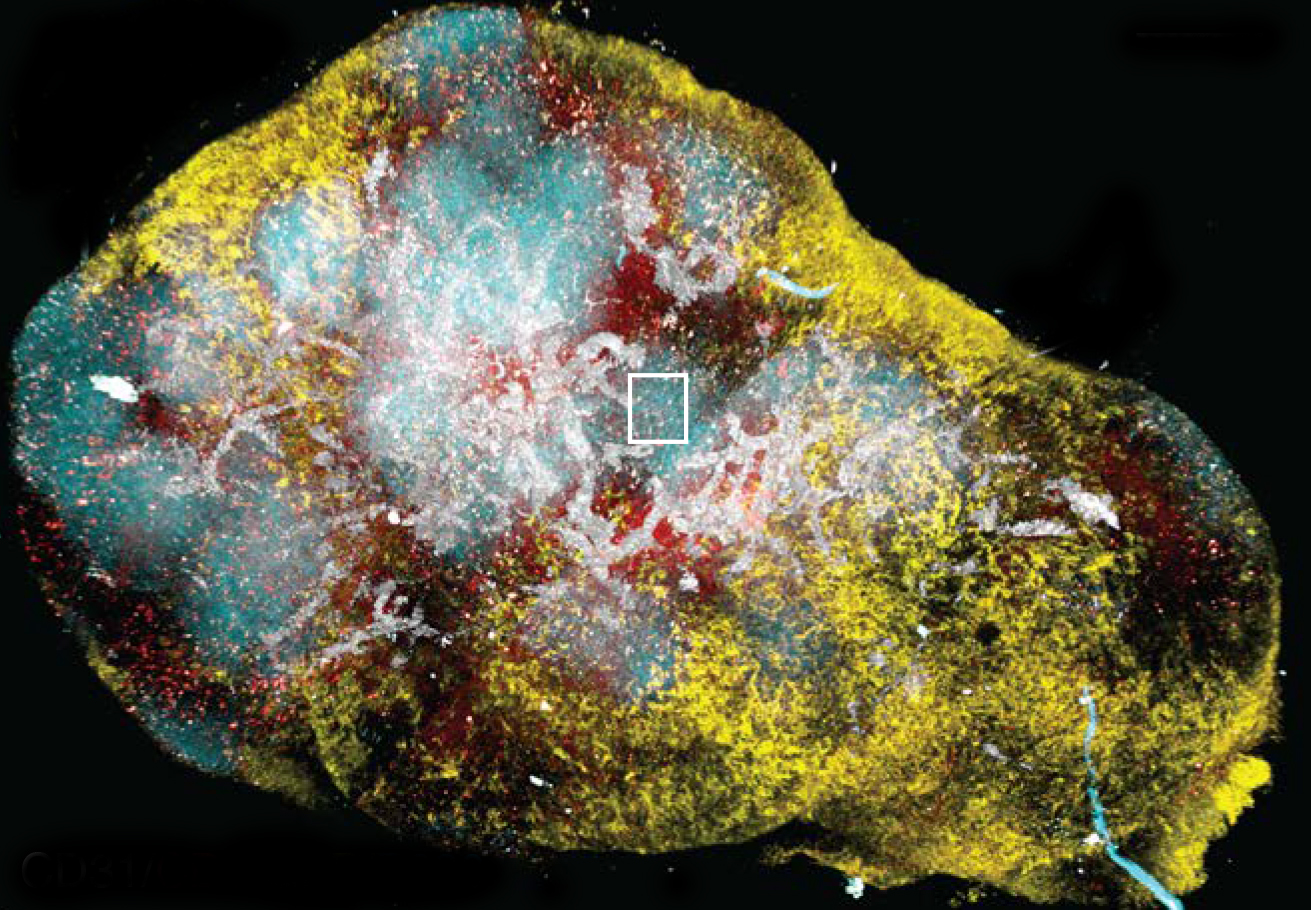29 Mar 2019
‘Moving target’ breast cancer cells revealed by new imaging technique
Melbourne researchers have developed a new imaging technique to visualise key steps of the evolution of cancer cells within tumours, potentially revealing how breast cancers evade treatment.

An image of a lymph node that appears in the Cancer Cell paper courtesy of Associate Professor Scott Mueller.
Using a laboratory model of breast cancer, Walter and Eliza Hall Institute (WEHI) researchers, with collaborators including the Doherty Institute, were able to view tumours in three dimensions, at previously unachievable high resolution.
This revealed how cancer cells develop from pre-cancerous cells in the mammary ducts, and changes that occur in the tumour over time.
The research, which was published today in the journal Cancer Cell, suggests that breast cancer cells are inherently changeable, morphing from one cell type to another at the molecular level – resembling cells that are more likely to spread.
The transformation of normal cells in the mammary gland to cancer cells occurs in many stages, with ‘pre-cancerous’ cells evolving into early-stage cancer cells, which may then undergo changes that make the cells more likely to spread away from the tumour.
Until now, it has not been possible to visualise individual clones – ‘sister’ cells that descended from a single pre-cancerous cell – within a whole tumour.
Imaging technology enabled the research team to examine the frequency of pre-cancerous cells that develop into tumours in the mammary gland, and address the behavior of cells within tumours.
Research leads Dr Anne Rios, Professor Jane Visvader and Geoff Linderman at WEHI worked with Associate Professor Scott Mueller from the Doherty Institute, who assisted with development of a new imaging technique that was central to the discovery.
“The new imaging method allows the complexity of healthy tissues and tumours to be revealed in three dimensions and at the level of the individual cells,” Associate Professor Mueller said.
Dr Rios said the method enabled the team to capture previously unseen images of breast tissue and mammary tumours – crucial for the discovery of the frequency of ‘epithelial-to-mesenchymal transition’ (EMT) within the tumours.
Professor Visvader said using the new imaging technique, it was revealed that only a small proportion of pre-cancerous cells will develop into tumours.
“In contrast, once a tumour has been formed, we discovered it was very likely for its cells to undergo a so-called EMT. This is a change in the molecular landscape – the genes that are switched on or off – within the cell, transforming it from an ‘epithelial’ form, to a ‘mesenchymal’ form that could have a growth advantage,” she said.
“Our models suggest that EMT is not a rare event but is an inherent feature of mammary tumour cells.”


